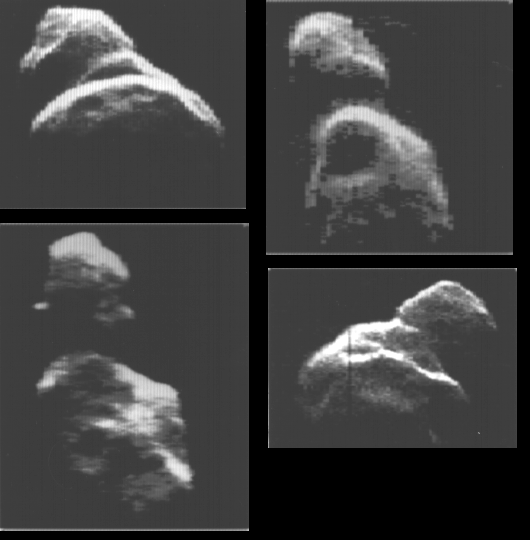When I first looked at the image, I saw what appeared to be many stretching artifacts that often come from 2D data being extrapolated onto a 3D model, as is common with many of the images from mars.
http://saturn.jpl.nasa.gov/multimedia/images/image-details.cfm?imageID=1762
What I found interesting is that this photo was a "live shot". The stretched walls of the smaller crater transitioning into the edge of the larger one must actually exist.
It's amazing, really. If you follow the "moons are collections from rings" theory as I do, this is a living example of a moon 1/2 way through the debris collection phase.
The stretched walls of the smaller crater transitioning into the edge of the larger one must actually exist.I keep looking at that edge and it keeps looking like a fracture surface. They've found "dumbbell" asteroids (Toutatis) -- could Hyperion be a dumbbell asteroid that got hit hard enough to break it into two pieces? Maybe one of the other pieces is one of the smaller moons, or maybe the impact knocked the smaller piece out of Saturn's orbit?
There are going to be some seriously weird theories for this moon, I'm sure.
Images of Toutatis:

